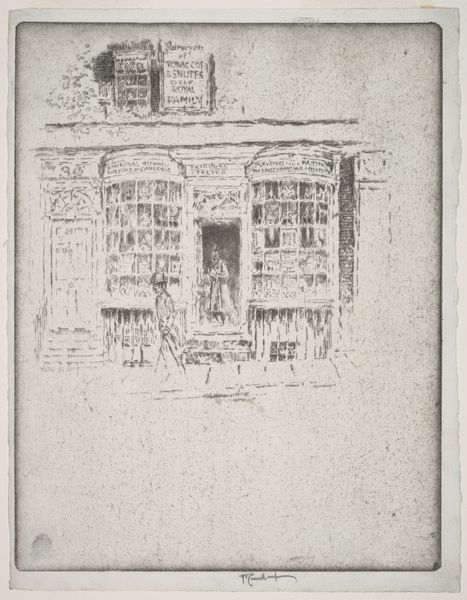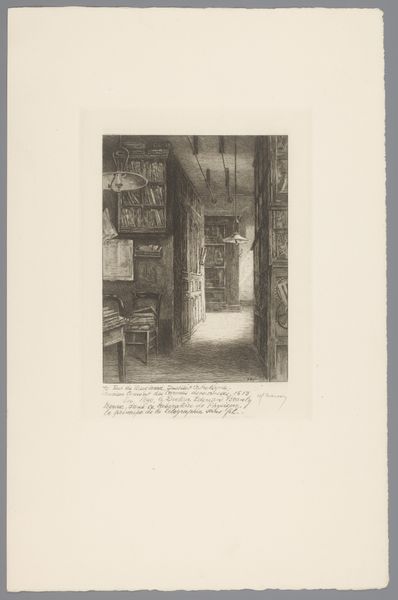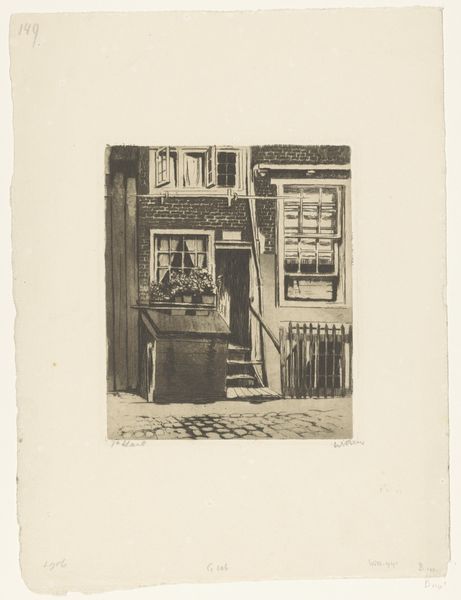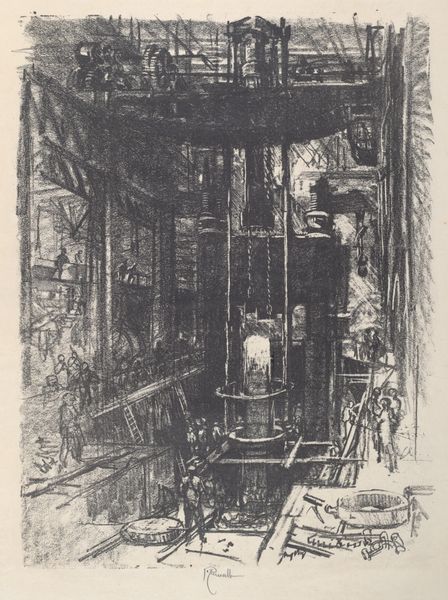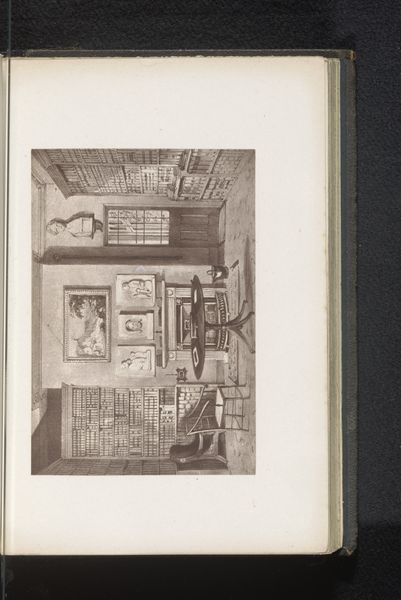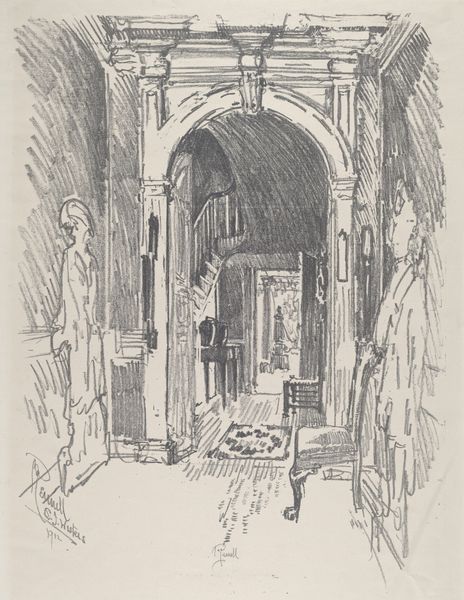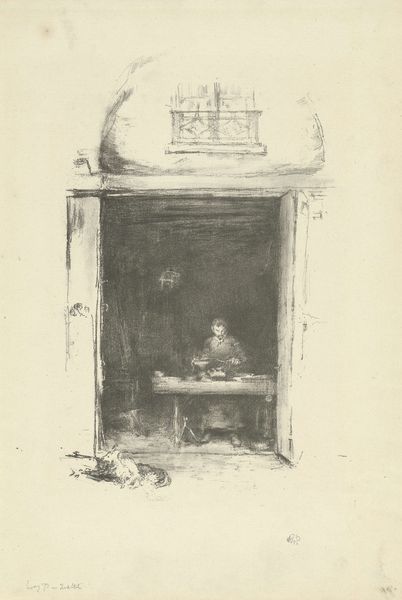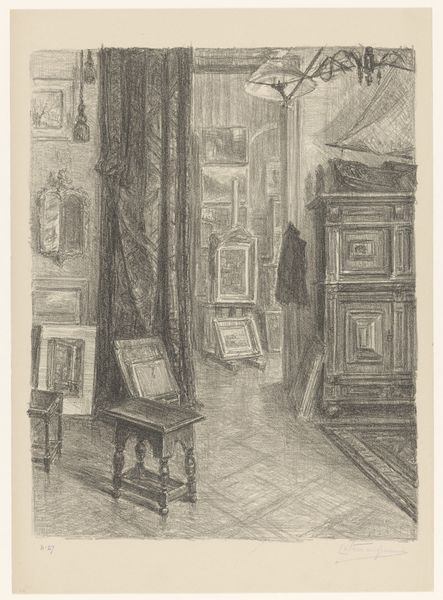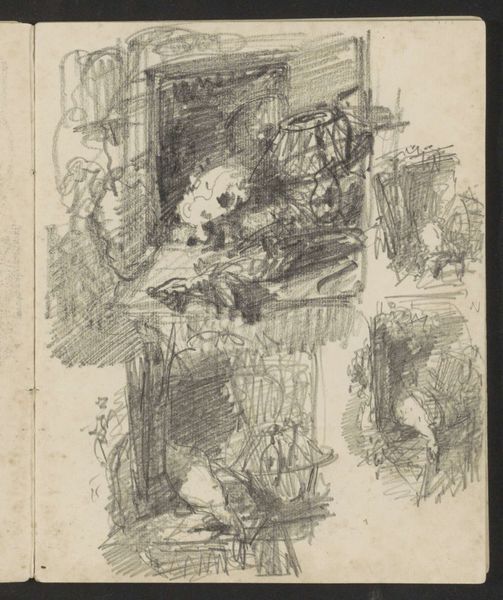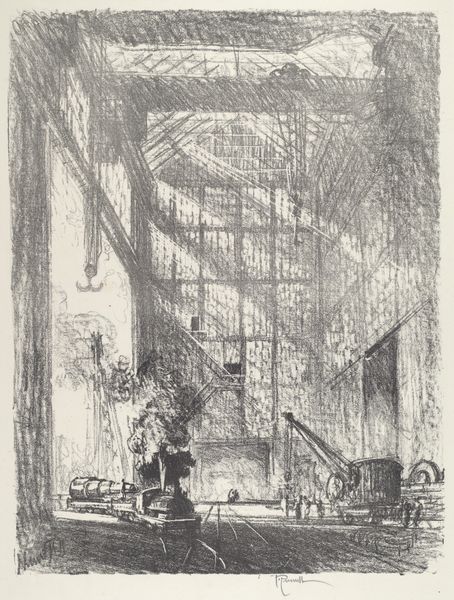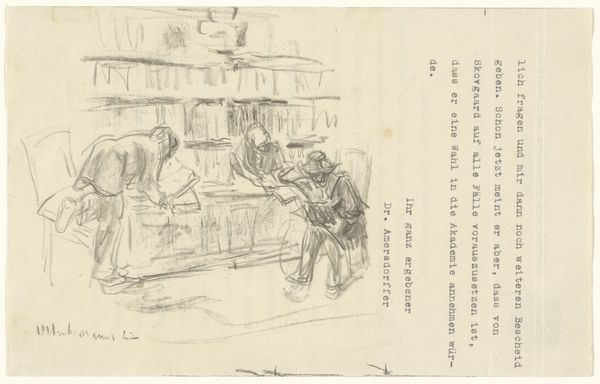
Copyright: National Gallery of Art: CC0 1.0
Editor: So, this is "Book-Room at Dr. Wister's," a 1912 print by Joseph Pennell. The texture created with ink and pencil is captivating! There's a depth of field, though everything seems flattened in monochrome. How do you interpret this work, focusing on the art itself? Curator: This interior rendering compels us through its linear orchestration. Note how the lines vary in weight, constructing spatial planes within a largely grayscale composition. Consider, too, how the books, while uniformly rendered, suggest a multiplicity that is both chaotic and ordered. Observe the subtle asymmetry--the slightly off-kilter positioning of the door--does this intentional disruption guide your reading of the space? Editor: It definitely throws me off a little; my eyes jump around rather than smoothly transitioning into the back room. Is the perspective intentionally skewed? Curator: Indeed. And that visual friction generates dynamism. What effect do you believe this skewed approach achieves within the broader framework? Note the visual rhythm set up by the repetition of verticals and horizontals. The chair, the globe, the picture frames...all elements in an orchestrated disarray, creating layers that pull the viewer into the depicted scene. Editor: I see what you mean! By emphasizing the inherent qualities—the lines, forms, and how they relate to each other—he has transformed a simple room into an experience. Curator: Precisely! Through close inspection of formal components, we reveal an articulation greater than representational likeness. It's through these intentional aesthetic choices, where line and texture interact and lead the viewer, that we reach its essence. Editor: Okay, now I see Pennell's strategic arrangement beyond just sketching a book room. Thanks for spotlighting his technique. Curator: A fruitful formal reading clarifies our understanding of aesthetic and the intentional placement of those mechanics in the production of meaning.
Comments
No comments
Be the first to comment and join the conversation on the ultimate creative platform.
